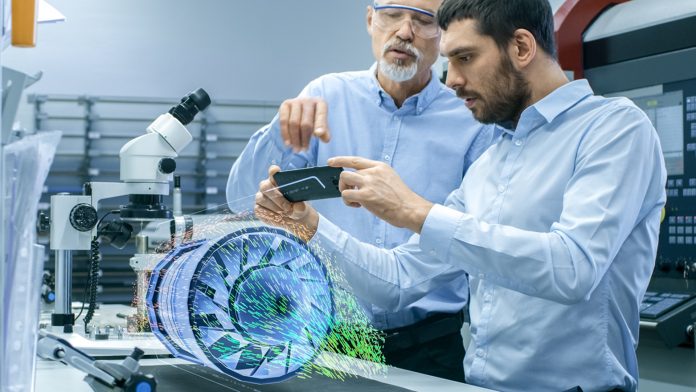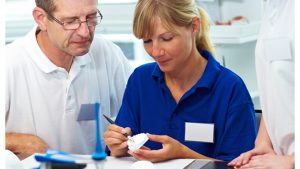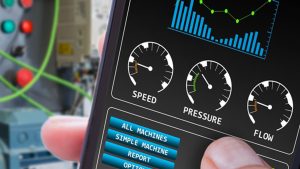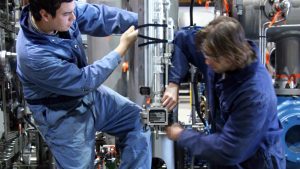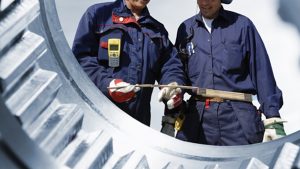CJ Evans, Managing Director at American Diversified Enterprises LLC, discusses how the use of the nine Technology Readiness Levels (TRLs) can support innovative projects in energy and sustainability.
Using the Technology Readiness Levels scale, many promising ideas, concepts, and innovations could improve, add to, and make game-changing energy, sustainability, and bioeconomy breakthroughs. They could also create new jobs, bring economic growth to US communities, and catapult the US into a global lead in innovation.
However, they may wind up languishing, losing steam, and ultimately falling silent, never to be heard from again, for one simple reason: lack of sufficient capital.
At whatever point on the path to commercialisation that a bioenergy or bioeconomy project might be, federal funding, grants, and incentives are available, at least for those who know where to look and how to meet the requirements.
A significant element of seeking out and receiving financial support is recognising at what stage the project is, identifying likely funding sources, and meeting the requirements necessary to apply for and receive that money.
What are the Technology Readiness Levels?
The Technology Readiness Levels scale is a method for ascertaining the technology maturity of an idea, concept, or innovation. It uses a scale of one to nine, with nine being the most mature technology. (There also is a similar scale to measure each Manufacturing Readiness Level or MRL.)
This article describes each of the nine TRLs to help you match federal funding opportunities to the level that your innovation, technology, or project has reached so you can match the available funding sources to those that will allow you to advance.
TRLs and MRLs are used by multiple entities, including:
- Federal agencies such as the Departments of Energy and Defense;
- The National Aeronautics and Space Administration (NASA) and Federal Aviation Agency (FAA);
- The oil and gas and biomedical industries;
- The European Union and the European Space Agency; and
- Research and development agencies, among others.
The use of these scales enables different agencies, industries, and disciplines – including scientists, researchers, analysts, and innovators from different fields of endeavour – to have consistent, uniform discussions of the technical maturity, capabilities, and steps necessary to move an idea, concept, or innovation to the next level of development, and toward full realisation.
With this information, it is possible to define the funding needs for each level of development and match it up with a list of funding opportunities targeted to that development level that are available from the private sector and federal government.
This article focuses on federal funding opportunities for the nine Technology Readiness Levels.
While the definitions for TRLs are consistent across all entities, different industries, agencies, and disciplines include additional elements in their definitions to address specific needs consistent with their missions.
The definitions used in this article incorporate as many of these elements as possible. They also include a set of more finely tuned and targeted definitions developed by DWH Processing Consultant Dave Humbird that list the marketing and business development materials that need to be prepared along with the necessary technical data to progress from one TRL level to the next.
The first step: Basic research
Technology Readiness Level 1
Scientific research is initiated, beginning the translation to applied research and development (R&D). Basic principles are observed and reported.
The concept and its basic functionality are demonstrated through analysis, testing, and reference to features shared with existing systems/technologies. First-principles modelling and simulation may complement physical experiments.
It is successfully completed when it is shown that the proposed technology, concept, process, or approach is likely to meet objectives with additional testing.
Must do’s
- Expand the section in the core proposal on the societal, environmental, or economic needs that will be addressed: identify relevant markets, target customers, customer needs, direct and indirect competitors, and competitive advantages;
- Outline a commercialisation plan;
- Develop an ‘elevator speech’ and ‘pitch deck’ to summarise key concepts / TRL-1 results for potential investors/funders;
- Prepare a peer-reviewed paper, if appropriate; and
- Begin preparing a business plan.
Research to prove viability: Basic research continued
Technology Readiness Level 2 begins
The application, utilisation, and operation of the technology, concept, process, or approach is formulated. Design and novel features are validated through model or small-scale testing in a laboratory environment. Technical and business potential are confirmed.
It is successfully completed when it is shown that the proposed technology, concept, process, or approach can meet specified acceptance criteria with additional testing.
Must do’s
- Update core proposal, along with feasibility, risk and solution measures, based on TRL-2 results;
- Prepare value proposition;
- Expand economic and market analysis: conduct a market study to flesh out details on target customers, customer needs, competitors, and competitive advantages;
- Complete descriptions of the company, management, proposed products and services, and market analysis sections of the business plan;
- Refine elevator speech and pitch deck; and
- Assess the intellectual property value of R&D in case the idea, concept, process, or approach is ultimately not ready for commercialisation.
TRL 3: Research to prove feasibility and technology development
Technology Readiness Level 3: The initiation of active R&D
Proof-of-concept studies and laboratory analyses are conducted to test and validate analytical and experimental critical functions and characteristics. Bench-scale, prototype, and model components, units, process reactors, and simulators are built and functionally demonstrated, individually or in series, through testing over a limited range of simulated or actual operating conditions.
It is successfully completed when it is shown that critical functions and characteristics operate or respond as projected.
Must do’s
- Update core proposal, value proposition, and business plan based on TRL-3 results;
- Identify areas that need further development: concepts that have been thoroughly researched in the lab with no consideration given to scale-up challenges should be viewed as insufficiently de-risked. Conversely, a highly detailed design with an unproven core element should be dismissed;
- Begin development of financial model: identify and quantify input and production costs; and
- If the minimum cost is unacceptable, additional work will be required to identify different inputs, sources of inputs, and production methods to lower costs.
This step is necessary to validate the value proposition and commercial viability of the proposed technology, concept, process, or approach to give confidence to investors and other funders that it is ready for scale up.
Technology demonstration
Technology Readiness Level 4: The integration of basic components
The basic elements, components, and processes central to the technology, concept, process, or approach are integrated. Component, process, and bench-scale validation is conducted in a laboratory environment to establish that the pieces will work together.
It is successfully completed when it is shown that the pieces work together and the new technology, concept, process, or approach is ready for first use.
Must do’s
- Develop/refine initial flow sheets, schematics, heat, material, energy balances, etc;
- Refine financial models and costs;
- Update core proposal, value proposition, and business plan based on Technology Readiness Level 4 results; and
- Ensure the update presents a compelling story to investors and funders; moving to TRL-5 requires a significant investment to support additional technical labour and capital equipment.
Technology development and technology demonstration
Technology Readiness Level 5: Validation of operational integrity
Component, process, and bench-scale validation is conducted in an actual or simulated relevant environment.
The completion of Technology Readiness Level 5 marks the end of bench-scale work and the final reduction of scientific risk.
For technologies, concepts, processes, or approaches that will produce an end product, continuous, integrated tests during TRL-5 should be designed to produce small lots of the end product with its intended formulations and specifications, which should then be validated through third-party testing and analysis.
These test lots can be provided to investors, offtake partners, and regulatory agencies. Some developers in the food, biomaterials and personal-care spaces may have the opportunity in TRL-5 to provide free samples to the public and market test their acceptance.
It is successfully completed when it is shown that the new technology, concept, process, or approach and its related processes, systems, hardware, and components operate as predicted in the intended environment and are ready to be integrated into a fully operational prototype.
Must do’s
- Refine and expand technical and engineering capabilities (via new hires or by engaging outside firms); and
- Update and expand core proposal; value proposition; cost breakdowns; financial model; business plan; flowsheets; heat, material, and energy balances; and feasibility, risk, and solution analyses based on TRL-5 results.
Technology development, demonstration, and subsystem development
Technology Readiness Level 6: Model, prototype, or pilot testing
A fully integrated, fully operational system/subsystem model, technology, prototype, process, or pilot is demonstrated in a relevant environment, with interface and functionality tests conducted.
There is no sharp transition between TRLs 5 and 6, which focuses on the design and operation of a prototype or pilot-scale (nominally 1/100th of commercial scale) testing unit.
Prototype and pilot development may still take place in a laboratory, but experiments are carried out at an engineering scale rather than a bench scale. Prototype and pilot-scale unit operations may be designed and procured while bench-scale work continues, with the larger units replacing smaller units as they are brought online and validated.
Engineering-scale equivalents of all the unit operations that will be required at scale, including prototypes of any novel operations such as product separation.
It is successfully completed when it is shown that the technology, concept, process, or approach has demonstrated a sustained, consistent functionality and is ready for scale up. To the extent that there is a ‘valley of death’ for proposed ventures moving up the TRL scale, it is most likely to occur in TRLs 5 and 6.
Careful selection and specification of pilot, prototype, and process equipment in TRL-5 and a deep understanding of their operational nuances in TRL-6 are critical to a successful continuous run in Technology Readiness Level 7.
Must do’s
- Update and expand all project specifications, proposals, analyses, economics, etc., based on TRL-6 results; and
- The TRL-6 prototype, process, pilot, model, or approach will be used by an engineering, procurement, and construction (EPC) or another appropriate firm to develop estimates for construction (or fabrication, development, or manufacturing) for the TRL-7 demonstration-scale prototype, process, model, approach, or plant (at 1/10th commercial scale) and develop relatively accurate (+ 30-40%) capital/production cost estimates for the full-size, commercial-scale technology, plant, process, product, or approach.
Subsystem development and subsystem demonstration
Technology Readiness Level 7: Demonstration scale testing
A fully integrated, fully operational system/subsystem model, technology, prototype, process, or pilot is demonstrated in an operational environment.
Tests are conducted under sustained day-in and day-out operating conditions over a prolonged period (a continuous, steady-state run of 1,000 hours is the industry standard for new technologies, equipment, processes, and plants to instil confidence in investors and funders). Investors and funders will most likely employ independent engineers to scrutinise and validate the prototype and pilot runs.
It is successfully completed when it is shown that the fully integrated technology, prototype, process, pilot, or approach and all of its components, systems, and subsystems operate as intended.
Must do’s
- Documentation is critical in Technology Readiness Level 7, requiring that data be carefully recorded and compiled, including which operations were running when, for how long, and how they performed;
- Flowsheets, heat, material, and energy balances, detailed engineering and design, cost analyses, etc., should be refined to near final form, with a very high level of detail. Investors and funders; and
- This, along with information and lessons gained from the operation, design, construction, startup, and operation of the demonstration system, technology, prototype, process, plant, or approach, will be used through external EPC resources to develop detailed construction, fabrication, manufacturing, or development estimates for the commercial plant, product, technology, or approach.
Technology Readiness Level 8: System preparation for launch and operations
Technology Readiness Level 8: Pre-commercial demonstrations and proof of operational technology, concept, or approach
A full- or near-full-size operational system is completed, troubleshot, operated continuously, and qualified through test and demonstration.
It is successfully completed when it is shown that the technology, process, or approach is proven to work at full or near-full-size commercial scale.
There is one must do at this TRL. Using analyses of demonstration-scale operability, final costs will be determined for operations and production and construction, fabrication, or manufacturing. Commercial-scale detailed engineering and design will be completed.
Operating conditions are explored to prove the technology, process, or approach within and outside normal parameters. Deviations from the predictions made during the pilot stage are identified, and mitigation plans are developed. Simulations are finalised and scaled up to a commercial scale.
The final TRL step: System launch and operations
Technology Readiness Level 9: First commercial deployment
Application of the technology, process, or approach in its final form. The fully developed technology, process, or approach is completed, built, operated, and deployed for the first time at full commercial/final scale to provide proof of successful operation of the actual system in an operational environment.
It is successfully completed when deployment in its final form demonstrates that it is operationally, economically, and functionally superior to other existing or similar technologies, processes, or approaches and is replicable, marketable, and financeable.
Must do’s
- Full-time engineering staff will continuously monitor operations to verify that they are meeting cost, yield, efficiency, and productivity targets; and
- Now, the Technology Readiness Levels development is complete, and rollout begins.
Where to find funding for additional deployment or replication
Project development grants, loans, and loan guarantees
American Diversified Energy has subject matter experts in all disciplines that are required to prepare applications and secure funding to move through each TRL.
The Federal Grants page on the American Diversified Energy website is a portal to the grants, funding, and support provided by each of the ten federal agencies listed above, with links to each agency’s grant-making programmes and lists of current solicitations.

